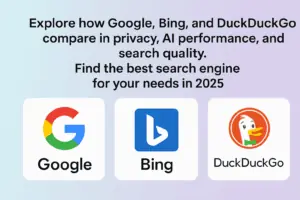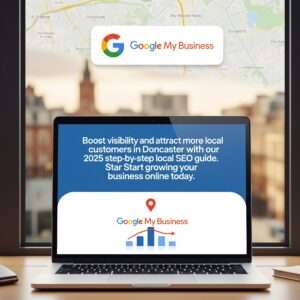Unlock the SEO Potential of Blogging: Strategies for Success
In the current digital landscape, the importance of blogs extends beyond traditional SEO benefits; they play a crucial role in optimising for AI-driven search engines, including Google’s AI overviews and other popular AI platforms like ChatGPT and Perplexity. As these AI systems evolve, they increasingly rely on high-quality, informative content to deliver accurate and relevant search results. Therefore, maintaining a robust blogging strategy is essential for businesses aiming to enhance their visibility and ranking across various AI platforms.
The Importance of Fresh Content
Current Trends
Search engines, particularly those powered by AI, prioritise websites that consistently provide fresh content. Regular updates signal to these algorithms that a site is active and relevant, which can significantly impact search rankings. For instance, Google’s algorithms are designed to favour sites that demonstrate ongoing engagement with their audience through new blog posts. This trend highlights the necessity for businesses to adopt a dynamic blogging schedule.
Best Practices
To maximise the benefits of fresh content, businesses should establish a consistent blogging routine. Here are some effective strategies:
- Create an Editorial Calendar: Plan topics in advance to ensure a steady flow of content.
- Set Realistic Goals: Determine how frequently you can publish new posts—whether weekly or bi-weekly.
- Repurpose Old Content: Update and refresh older posts with new insights or data to maintain relevance.
Example
Numerous case studies illustrate the positive impact of regular blogging on search rankings. For instance, a local service provider that increased its blog output from monthly to weekly saw its organic traffic double within six months. This underscores the tangible benefits of prioritising fresh content.
Effective Keyword Strategy
Keyword Research
Identifying high-intent keywords is fundamental for effective SEO in an AI-driven environment. Tools such as Google Keyword Planner and SEMrush can assist bloggers in uncovering keywords that resonate with their target audience. By focusing on these keywords, businesses can tailor their content to meet user needs and improve their chances of ranking higher in search results.
On-Page Optimization
Once keywords are identified, integrating them naturally into blog content is essential. Best practices include:
- Using Keywords in Headings: Incorporate primary keywords into headings and subheadings for enhanced readability and SEO.
- Optimising Meta Tags: Ensure title tags and meta descriptions contain relevant keywords to improve click-through rates.
- Avoiding Keyword Stuffing: Maintain a natural flow in writing; overusing keywords can lead to penalties from search engines.
Emerging Trends
The rise of voice search has led to an increased focus on long-tail keywords—phrases that are more specific and typically longer than standard keywords. As users become more accustomed to speaking their queries into devices, optimising for these longer phrases can provide a competitive edge.
Attracting Backlinks Through Quality Content
Creating Link-Worthy Content
Producing high-quality, informative blog posts is essential for attracting backlinks from other websites. Strategies for creating link-worthy content include:
- In-depth Guides: Comprehensive articles that thoroughly cover a topic are more likely to be referenced by others.
- Data-Driven Posts: Sharing original research or data can position your blog as an authoritative source.
Outreach Techniques
Promoting your blog effectively is key to gaining backlinks. Consider the following outreach techniques:
- Networking with Other Bloggers: Engage with other bloggers in your niche through comments or social media to build relationships.
- Guest Posting: Contributing guest posts on reputable sites can drive traffic back to your own blog while earning valuable backlinks.
Data Insights
Statistics reveal that backlinks significantly influence SEO rankings; websites with a higher number of quality backlinks tend to rank better in search results. For instance, studies show that pages ranking in the top positions on Google have an average of 3.8 times more backlinks than those ranked lower.
Importance of Blogs for AI Overviews
As AI technologies like Google’s AI overview feature become increasingly prevalent, blogs serve as vital resources for these systems. They provide structured information that AI can easily digest and present in response to user queries. By crafting well-researched and informative blog posts, businesses can ensure their content is featured prominently in AI-generated summaries and responses.
Platforms like ChatGPT and Perplexity leverage vast amounts of data from online sources to generate responses. High-quality blogs not only enhance a website’s authority but also increase the likelihood of being referenced by these AI systems when users seek information related to specific topics.
Enhancing User Engagement
Engagement Metrics
User engagement is a critical factor in determining the success of a blog, as it directly influences SEO performance. Key metrics such as time on page, bounce rate, and return visits provide insights into how well content resonates with readers. A longer time on the page typically indicates that users find the content valuable, while a high bounce rate may suggest that the content does not meet their expectations. Encouraging return visits is equally important, as it demonstrates that readers are not only finding your blog useful but also seeing value in returning for more information.

Interactive Content
Incorporating interactive elements into your blog can significantly boost engagement. Strategies include:
- Polls and Quizzes: These encourage readers to participate actively, providing them with personalised feedback or results.
- Videos and Infographics: Visual content can break up text and convey complex information more effectively, appealing to visual learners.
- Calls to Action (CTAs): Encourage readers to comment, share, or explore related content at the end of each post. For example, asking questions or offering giveaways can stimulate interaction.
Real-life examples demonstrate the effectiveness of these strategies. For instance, BuzzFeed’s quizzes generate substantial engagement by inviting users to interact with the content, resulting in increased shares and discussions on social media.
Establishing Authority and Trust
Content Quality
To build credibility, it is essential to produce well-researched and informative content. High-quality articles that address specific pain points or provide valuable insights position a blog as an authoritative source within its niche. According to research, nearly 74% of successful content marketing strategies hinge on delivering value through quality content.

Expert Contributions
Inviting guest bloggers or industry experts to contribute can enhance a blog’s authority. Collaborating with recognised figures in your field not only brings fresh perspectives but also lends credibility to your content. This approach can attract their audience to your blog, expanding your reach.
Trust Signals
Incorporating trust signals such as user reviews, testimonials, and case studies reinforces the credibility of your blog. These elements provide social proof that can influence potential customers’ perceptions and decisions. For example, featuring success stories from satisfied clients can enhance trust and encourage new visitors to engage with your services.
Leveraging Social Media for Increased Visibility
Cross-Promotion Strategies
Effectively sharing blog posts across social media platforms can significantly increase visibility. Tailoring posts for each platform—using engaging visuals for Instagram or concise summaries for Twitter—can enhance engagement and drive traffic back to the blog.
Engagement on Social Media
Encouraging discussions and sharing on social media is crucial for amplifying reach. Engaging with followers through comments and responding to questions fosters a sense of community around your brand. For instance, brands that actively engage with their audience on platforms like Twitter often see increased loyalty and customer retention.
Trends in Social Sharing
Analysing how social signals affect SEO is vital for understanding the broader impact of social media on search rankings. Research indicates that content shared widely on social media tends to attract more backlinks, further enhancing its authority in search engines.
Technical SEO Considerations for Blogs
Optimising Blog Structure
A well-structured blog is essential for both user experience and SEO performance. Key components include:
- Headings: Using clear headings (H1, H2, H3) helps search engines understand the hierarchy of information.
- Meta Descriptions: Crafting compelling meta descriptions encourages higher click-through rates from search results.
- Alt Text for Images: Including descriptive alt text improves accessibility and helps search engines index images effectively.
Additionally, if your blogs are targeting local audiences, incorporating location tags is crucial. For example, Be My Social is located in Doncaster but offers SEO services to other cities such as:
- Yorkshire
- Leeds
- Sheffield
- Bradford
- York
- Wakefield
- Hull (Kingston upon Hull)
- Ripon
Using local keywords in articles helps connect with your target audience more effectively by making your services relevant to their location.
Mobile Optimisation
With an increasing number of users accessing content via mobile devices, ensuring blogs are mobile-friendly is critical for maintaining user engagement and improving search rankings.
Page Speed and Performance
Tools like Google PageSpeed Insights can help analyse loading times and performance metrics. A fast-loading site enhances user experience and reduces bounce rates, which are essential factors for SEO success.
By focusing on enhancing user engagement through interactive content, establishing authority through quality contributions, leveraging social media effectively, and addressing technical SEO considerations, businesses can significantly improve their blogging strategy’s effectiveness in driving traffic and boosting search engine rankings.
Conclusion
In summary, blogging is an invaluable asset for businesses aiming to enhance their SEO strategies and improve online visibility. Throughout this article, we have explored several key points highlighting the importance of fresh content, effective keyword strategies, and the attraction of backlinks through quality writing. We also discussed how enhancing user engagement, establishing authority and trust, leveraging social media, and addressing technical SEO considerations can significantly impact a blog’s effectiveness.
Investing in a robust blogging strategy is not merely a short-term tactic; it is a long-term commitment that can yield substantial returns. By consistently producing high-quality content tailored to your audience’s needs, businesses can improve their search engine rankings and foster deeper connections with their customers.
Ready to Elevate Your Online Presence?
At Be My Social, we’re SEO specialists for Yorkshire, serving cities including Leeds, Sheffield, Bradford, York, Wakefield, Hull (Kingston upon Hull), and Ripon. We are not just SEO experts; we are also social media professionals, advertising managers, graphic designers, and web developers dedicated to creating beautiful websites and delivering successful campaigns for clients across the UK.
To learn more about how we can drive your business forward with a focus on tangible results that matter, get in touch with us today! Let’s work together to unlock your business’s full potential through effective SEO and innovative marketing strategies.
A no-fuss attitude and a speedy turnaround!
I’ve found the to be the very best company for us after trying several others over the years.
I’m glad to have them, because the cost of hiring someone directly to do the same work would be impossible.
Highly recommended.
Ruth and Emily are amazing, they are always on hand to answer any questions and explain everything thoroughly.
Our contact Ruth always makes herself available for telephone/zoom meetings, constantly checks up on how sales are progressing and advises on changes to marketing strategies to try and ensure increased traffic to the website. I cannot recommend them highly enough 🙂
Discover More Insights: Explore Our Blog for Expert Tips and Strategies!

The Psychology Behind Customer Testimonials: What Today’s Shoppers Really Want to Hear
62% of consumers say they trust customer testimonials more than brand advertising. Are your testimonials truly connecting with your audience? In today’s fast-paced digital landscape, shoppers crave authenticity and emotional

What People Really Think of AI Social Content
Summary AI is basically everywhere on social media now, spitting out posts, comments, memes—sometimes even stuff that makes you do a double-take. But, honestly? People are still on the fence

Instagram Meets Google: What Creators Need to Know Before July 10, 2025
From July 10, 2025, your public Instagram posts could appear in Google search results—are you ready to make the most of this game-changing update? This shift opens exciting new opportunities

Privacy, Power, and Performance: Google vs Bing vs DuckDuckGo
Did you know that Google processes over 8.5 billion searches every day, commanding nearly 90% of the global search engine market? Yet, growing privacy concerns have pushed millions of users

Local SEO Power-Up: A Step-by-Step Guide for Doncaster Businesses
Are you finding it hard to get your Doncaster business seen online? Do you want to know how to draw in more local customers in today’s digital world? Having a

SEO vs. PPC in 2025: A Comprehensive Comparison
Introduction In the ever-evolving world of digital marketing, businesses are constantly seeking the most effective strategies to drive traffic, generate leads, and boost conversions. Two of the most prominent methods







